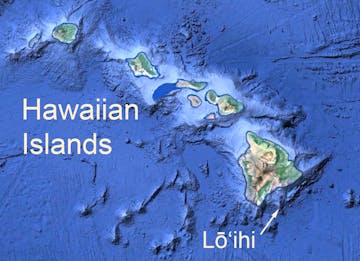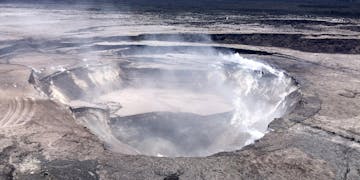
Loihi is an underwater volcano southeast of the Hawaiian Islands. It could reach the surface in 100,000 years. Base map by Google Earth.

Image courtesy of U.S. Geological Survey

Loihi is an underwater volcano southeast of the Hawaiian Islands. It could reach the surface in 100,000 years. Base map by Google Earth.
Unique deep-sea site reveals the transport of organic carbon from the surface to the seafloor and how it affects abyssal life.